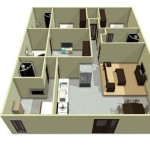Essential Aspects of Draw Plans for Home Addition to House Plan
Enhancing your living space with a home addition is an exciting project that requires meticulous planning and execution. Creating a well-thought-out draw plan is a crucial step in ensuring a successful outcome. Here are some essential aspects to consider:
1. Define Addition's Purpose and Scope
Clearly define the purpose of the addition. Are you adding a bedroom, bathroom, family room, or other space? Determine the size and layout that best meets your needs. Consider how the addition will integrate with the existing house and its overall aesthetic.
2. Choose the Right Architect or Designer
Hiring a qualified architect or designer is essential for a professional and accurate draw plan. Look for an experienced professional with a track record of successful house addition projects. They will help translate your vision into a functional and aesthetically pleasing design.
3. Outline Material Requirements
Specify the materials to be used for the addition, including exterior cladding, roofing, siding, windows, and doors. Choose materials that complement the existing house and meet your durability and aesthetic preferences. Include details about insulation, electrical, and plumbing systems.
4. Determine Codes and Permits
Check with local building authorities to ensure your addition meets all applicable codes and regulations. Contact the HOA (if applicable) for any additional restrictions or guidelines. Secure necessary permits before construction begins.
5. Include Site Survey and Soil Test
Obtain a site survey to determine the exact dimensions and contours of your property. This will help ensure the addition fits seamlessly within the existing landscape. Consider a soil test to identify any geotechnical issues that may affect foundation design.
6. Consider Energy Efficiency
Incorporate energy-efficient measures into the draw plan. This may include using high-performance windows, doors, and insulation, as well as designing the addition to take advantage of natural light and ventilation. Consider solar panels or other renewable energy sources.
7. Address Structural Considerations
Ensure the structural integrity of both the existing house and the addition. Include details of foundation design, framing members, and reinforcement. Consider the impact on the existing roof and the need for additional support.
8. Plan for Mechanical, Electrical, and Plumbing Systems
Specify the mechanical, electrical, and plumbing systems required for the addition, including heating, cooling, lighting, and water supply. Ensure these systems are compatible with the existing infrastructure and meet safety standards.

How To Draw A Floor Plan Live Home 3d

How To Draw A Floor Plan Live Home 3d

12 Examples Of Floor Plans With Dimensions

How To Draw A Floor Plan Live Home 3d

Two Story Addition Transforms Second Floor Of Home To Make It More Livable

Free Simple Two Story House Plans Edit Available

Floor Plan Virtual Architect

Free House Design Home And Plans

Home Design 2d And 3d Roomsketcher

House Floor Plan 4005 Designs Small Plans Home Homeplans








